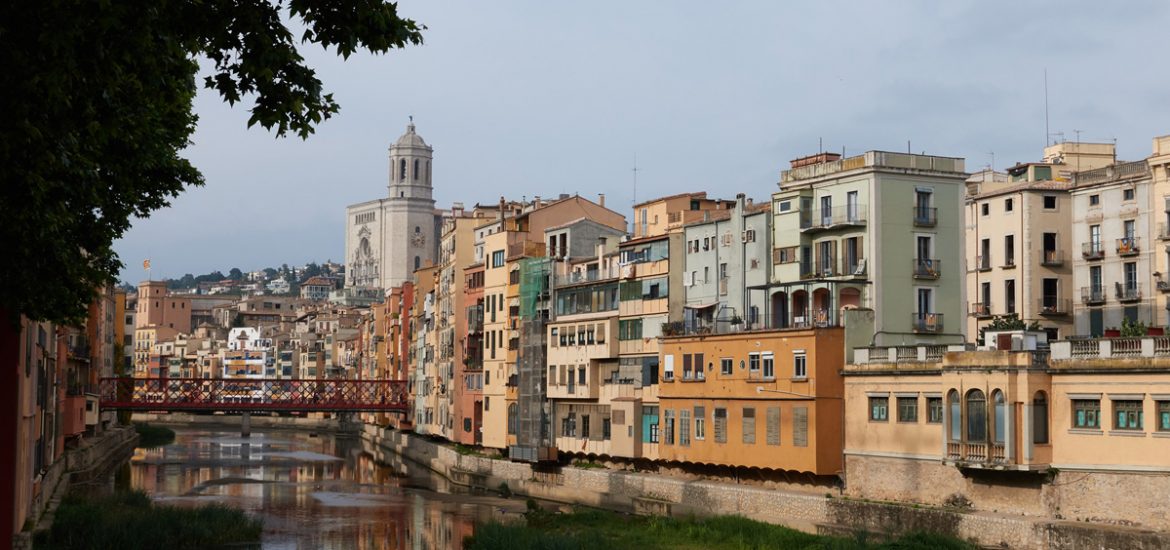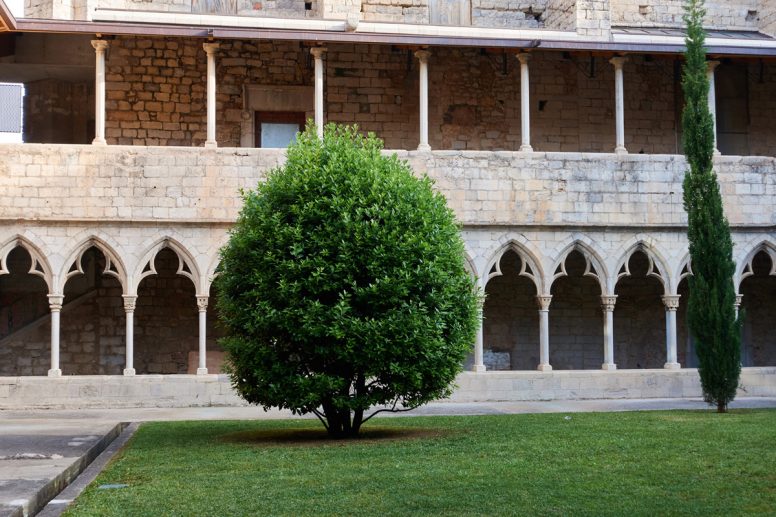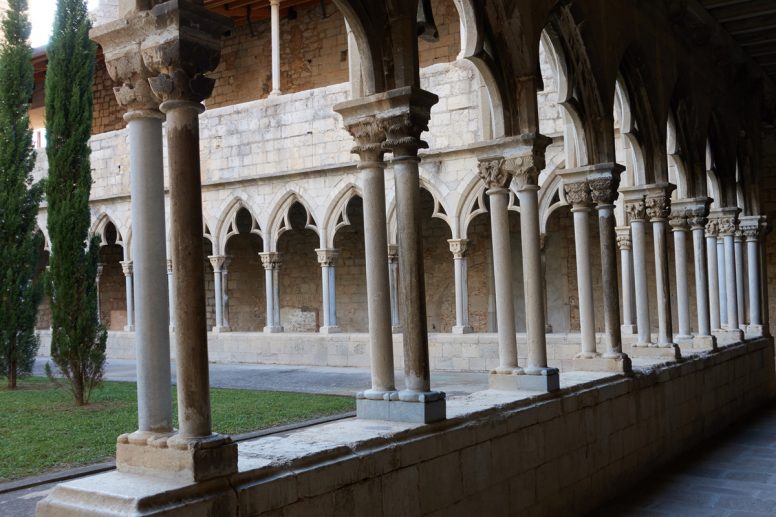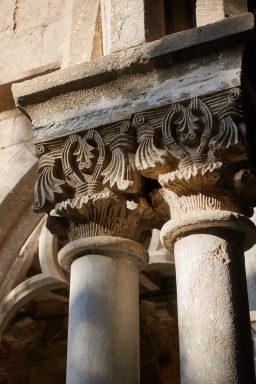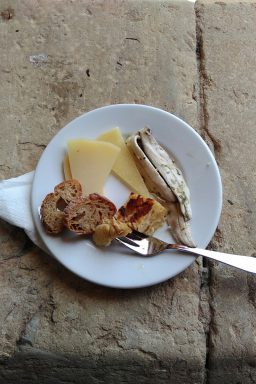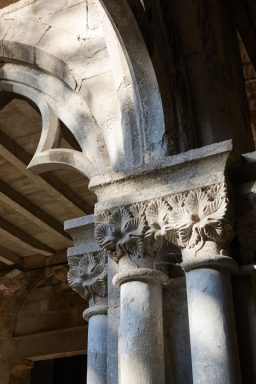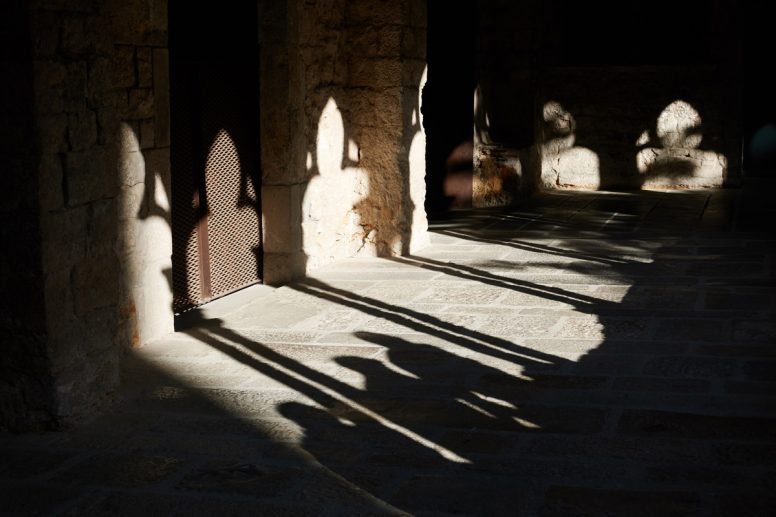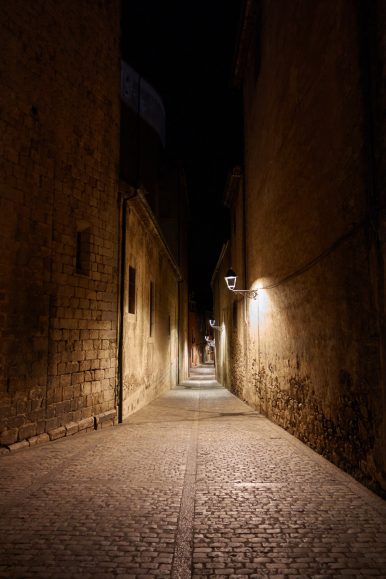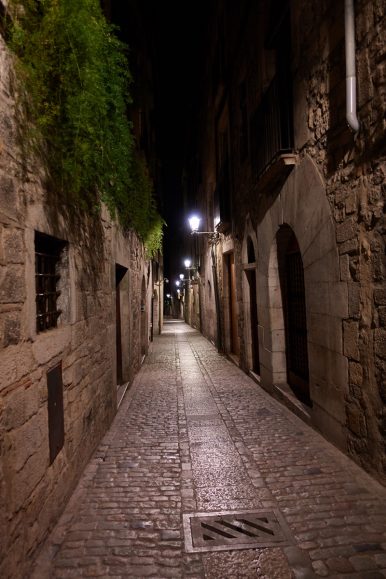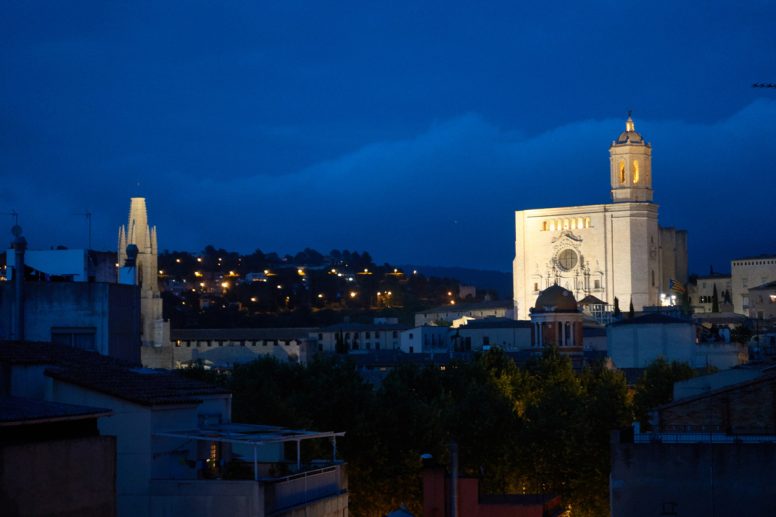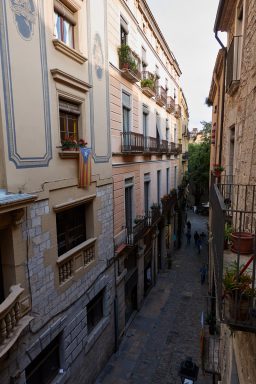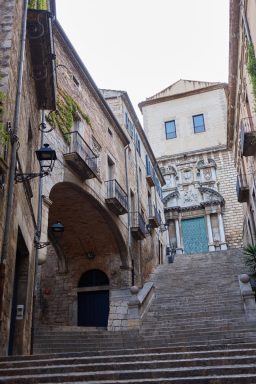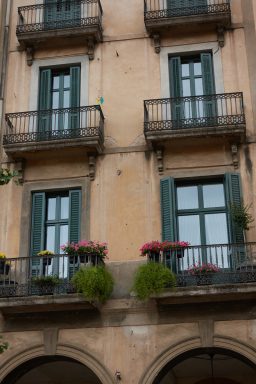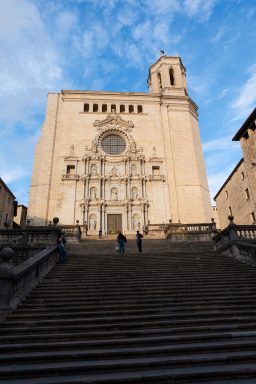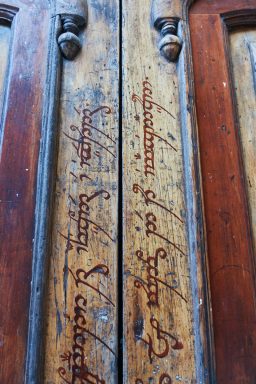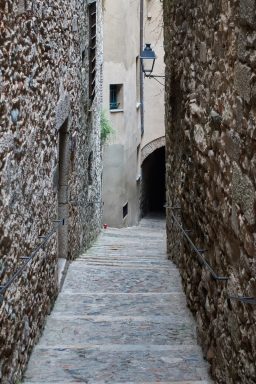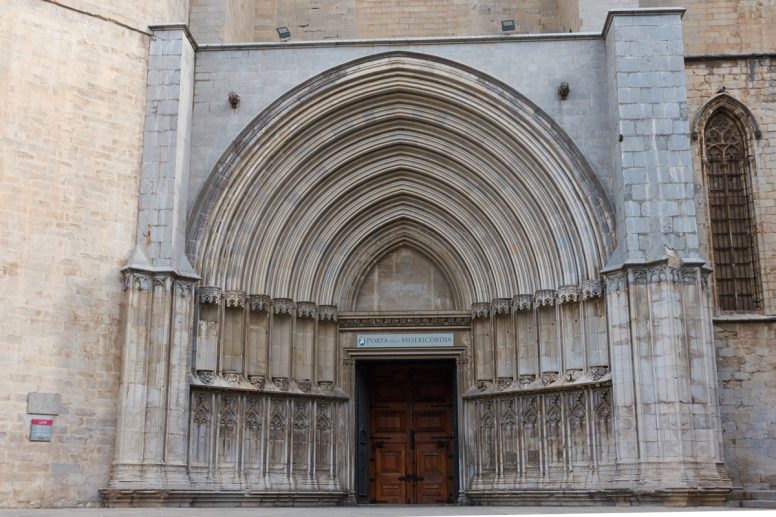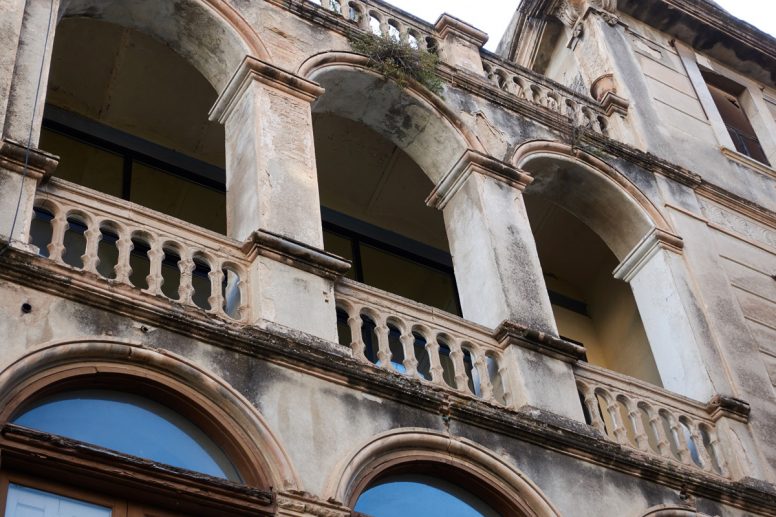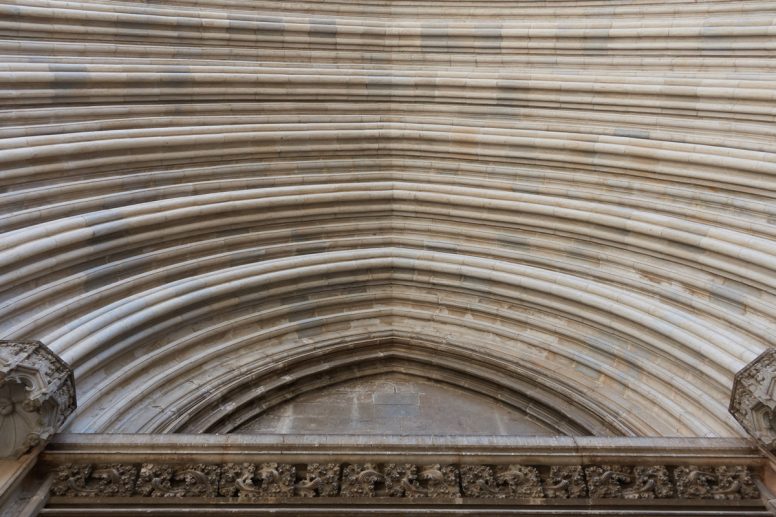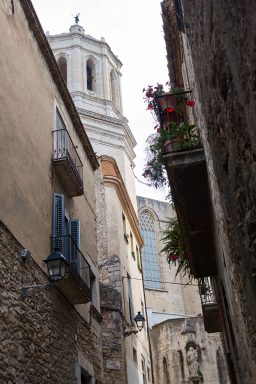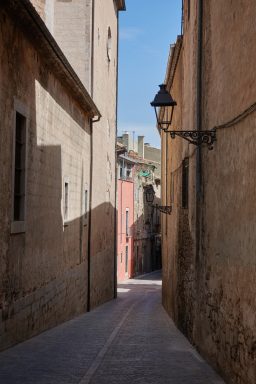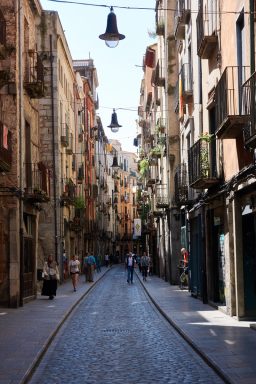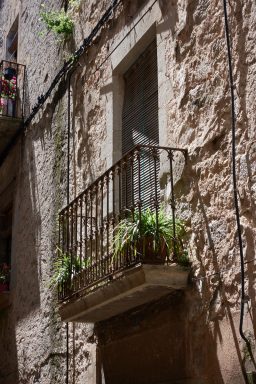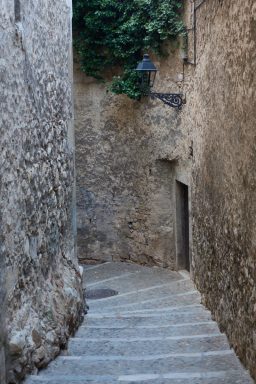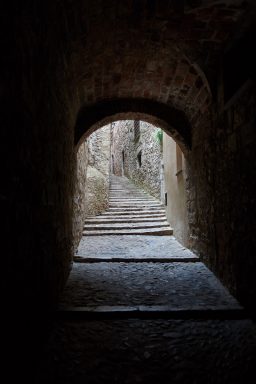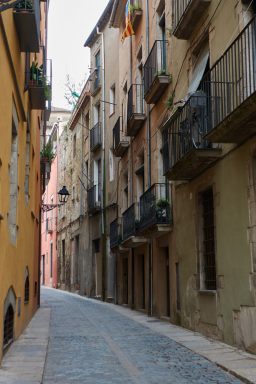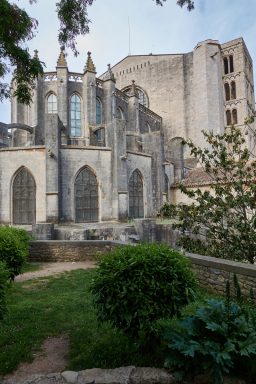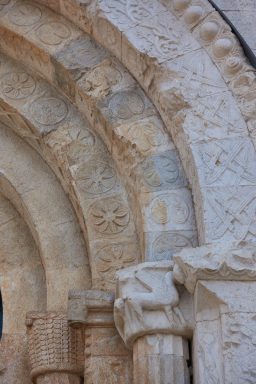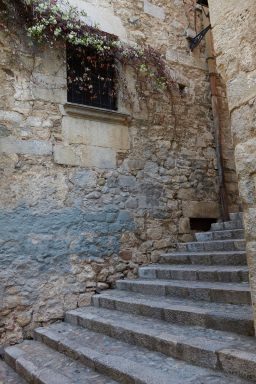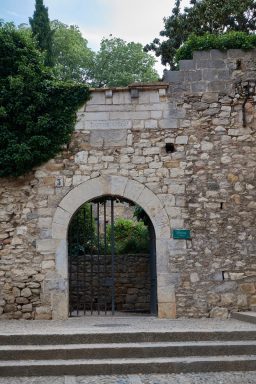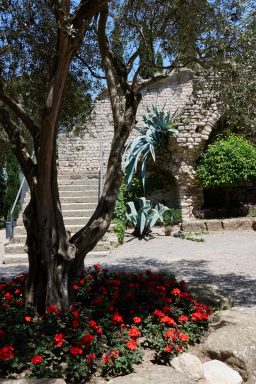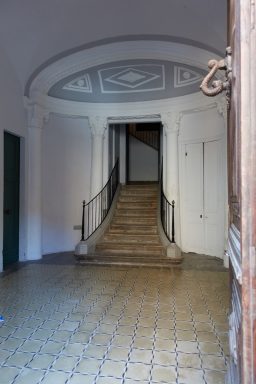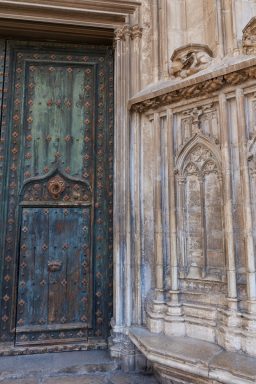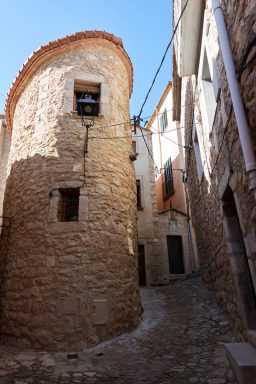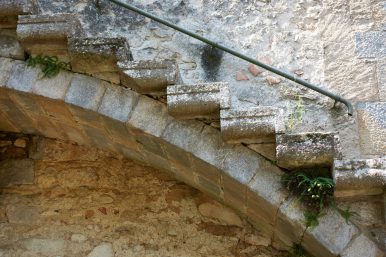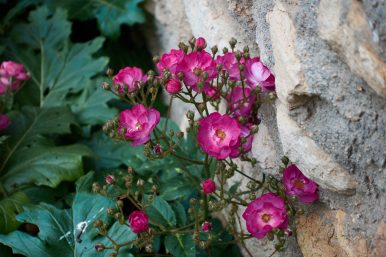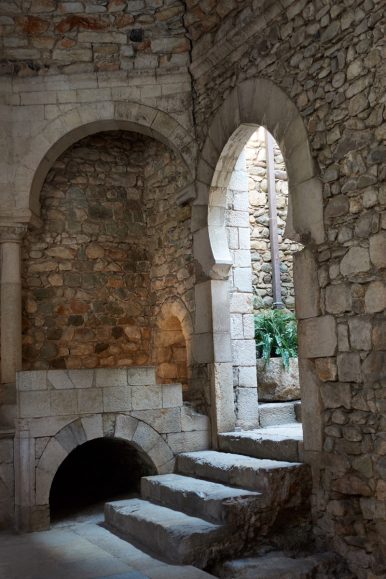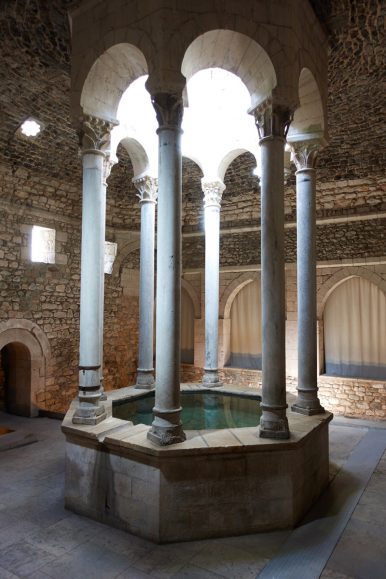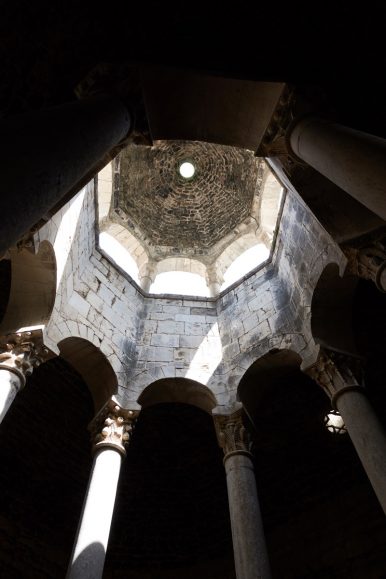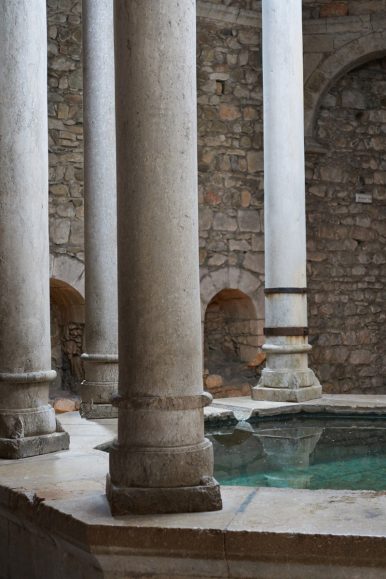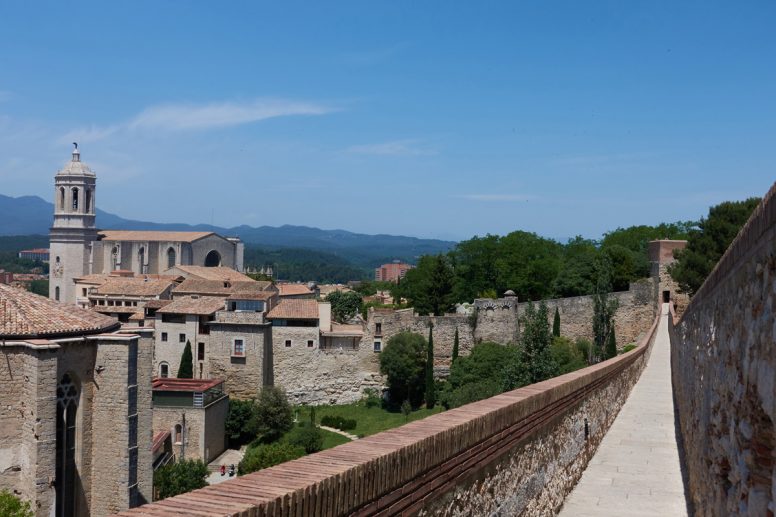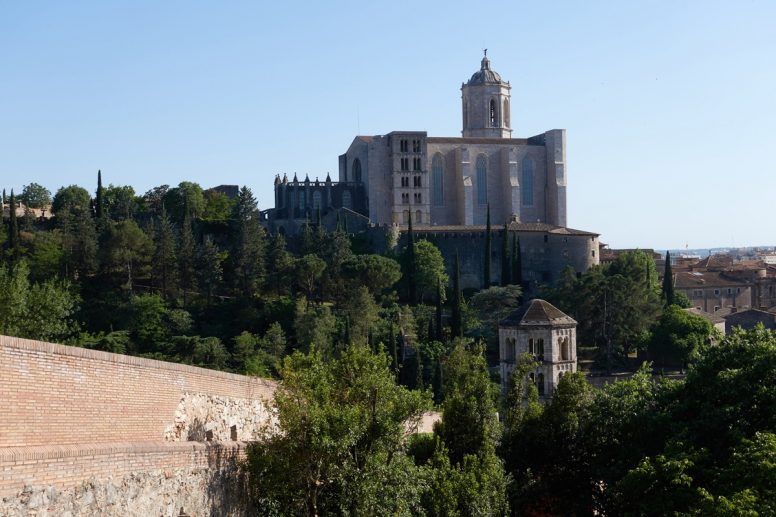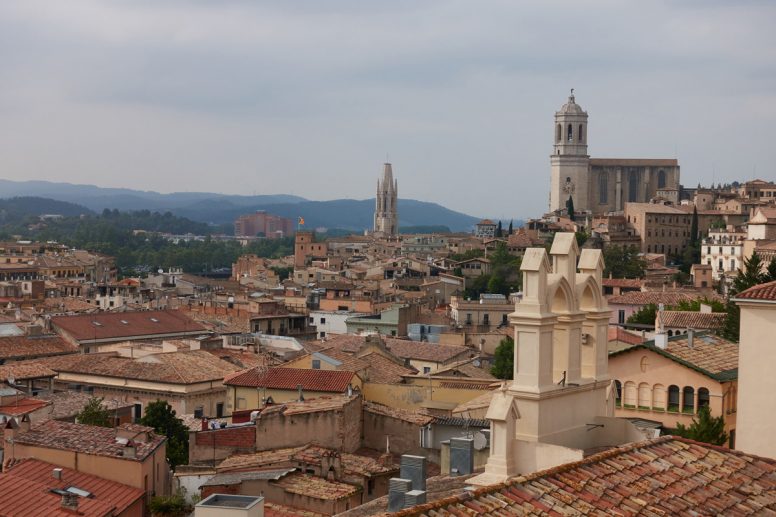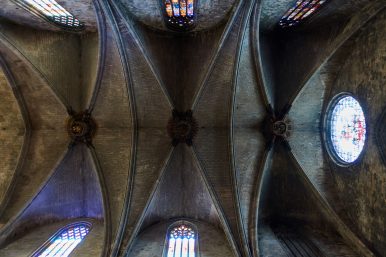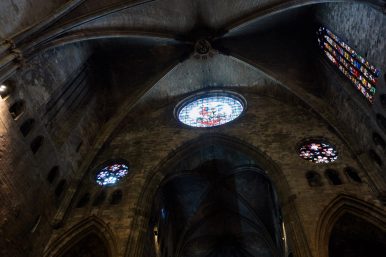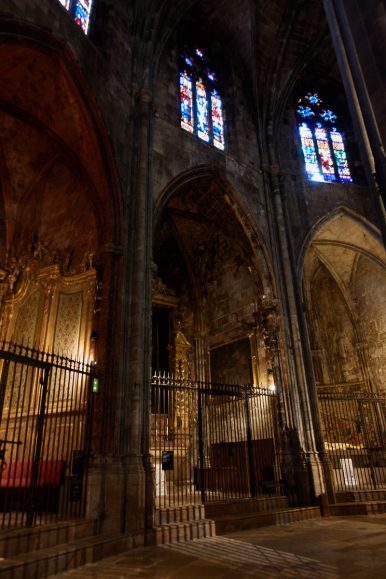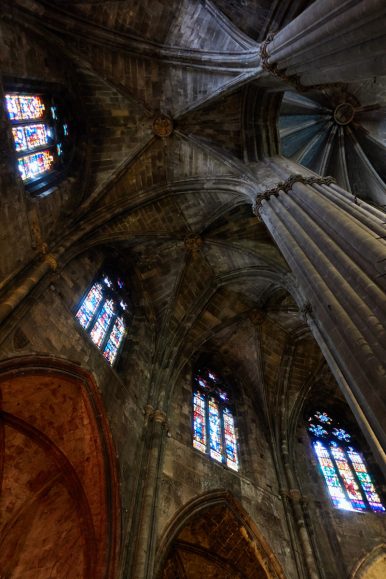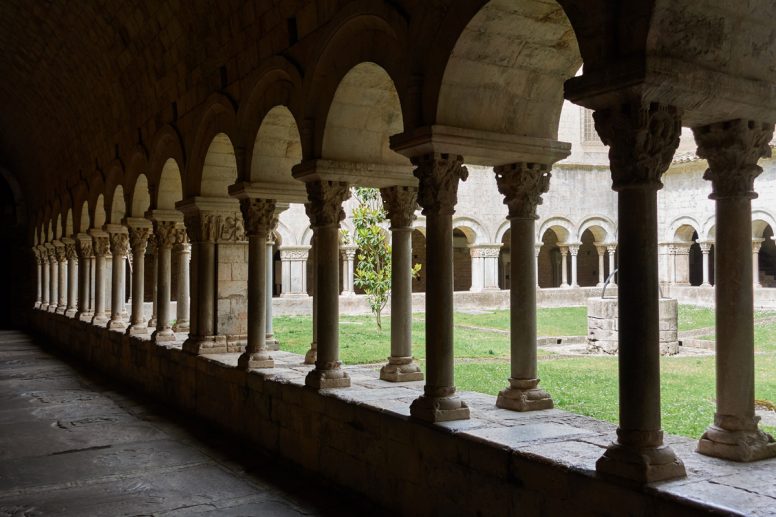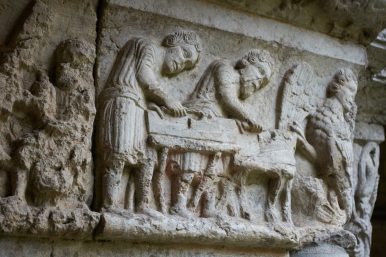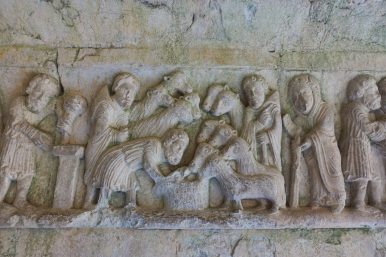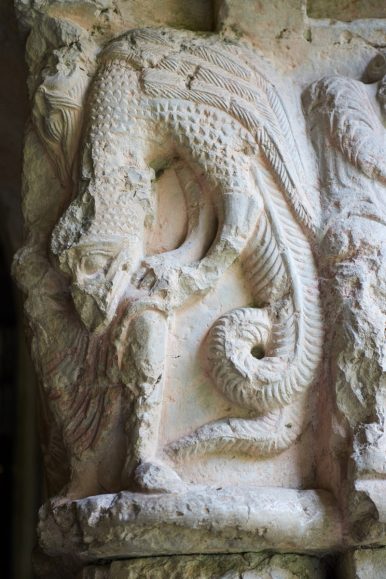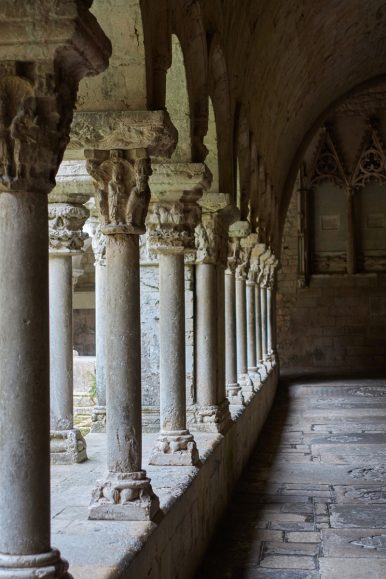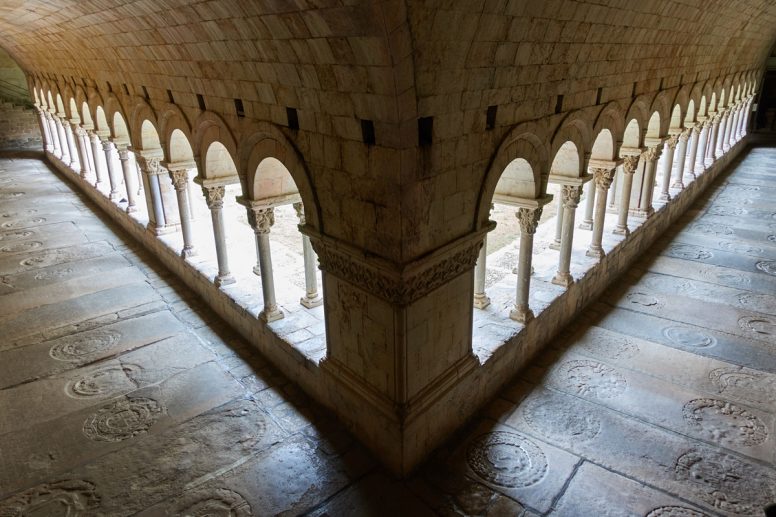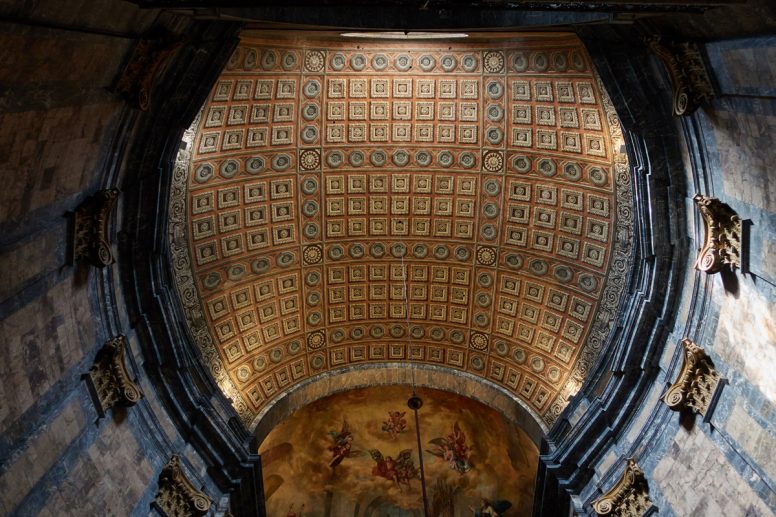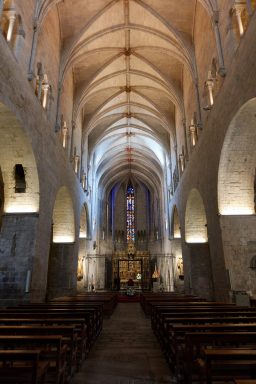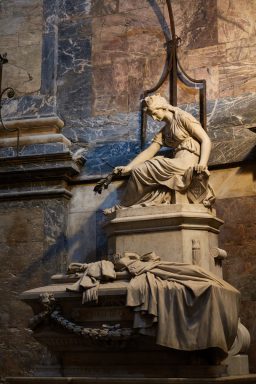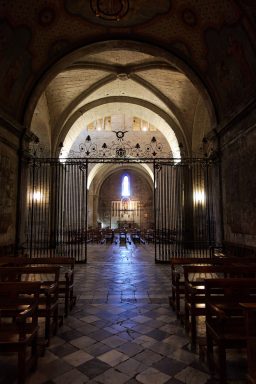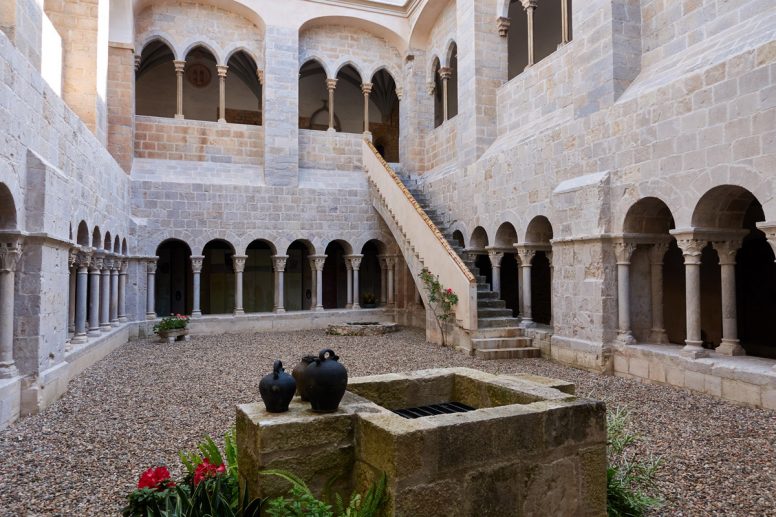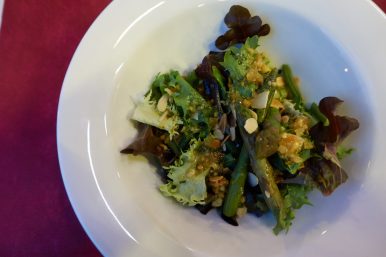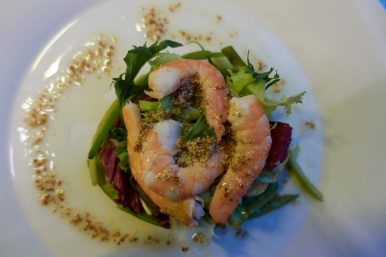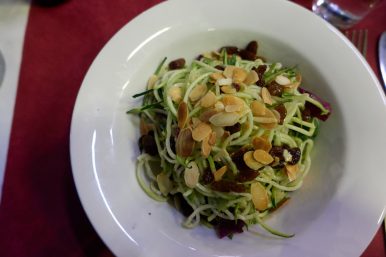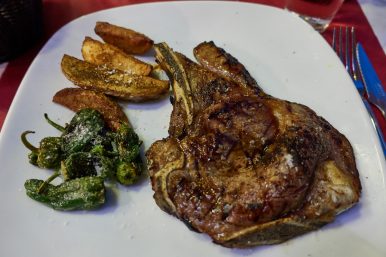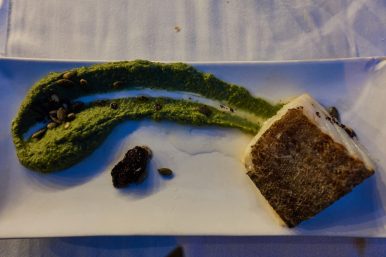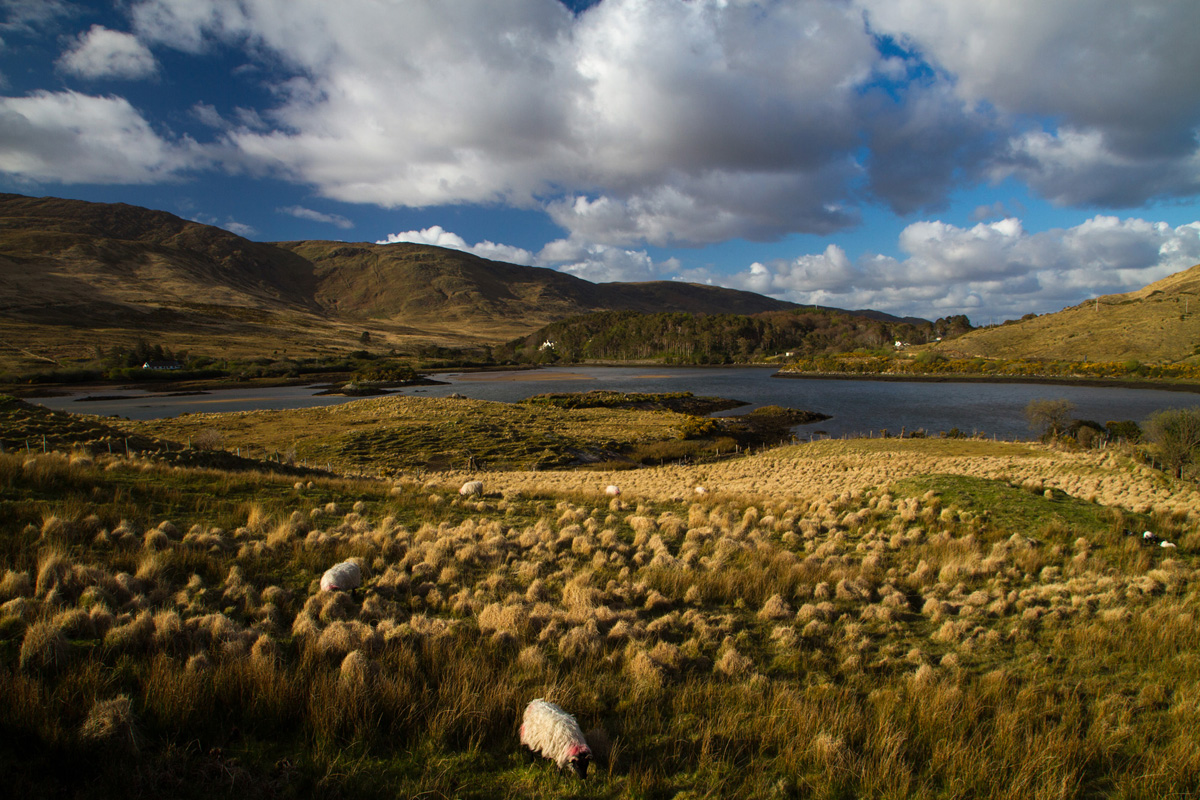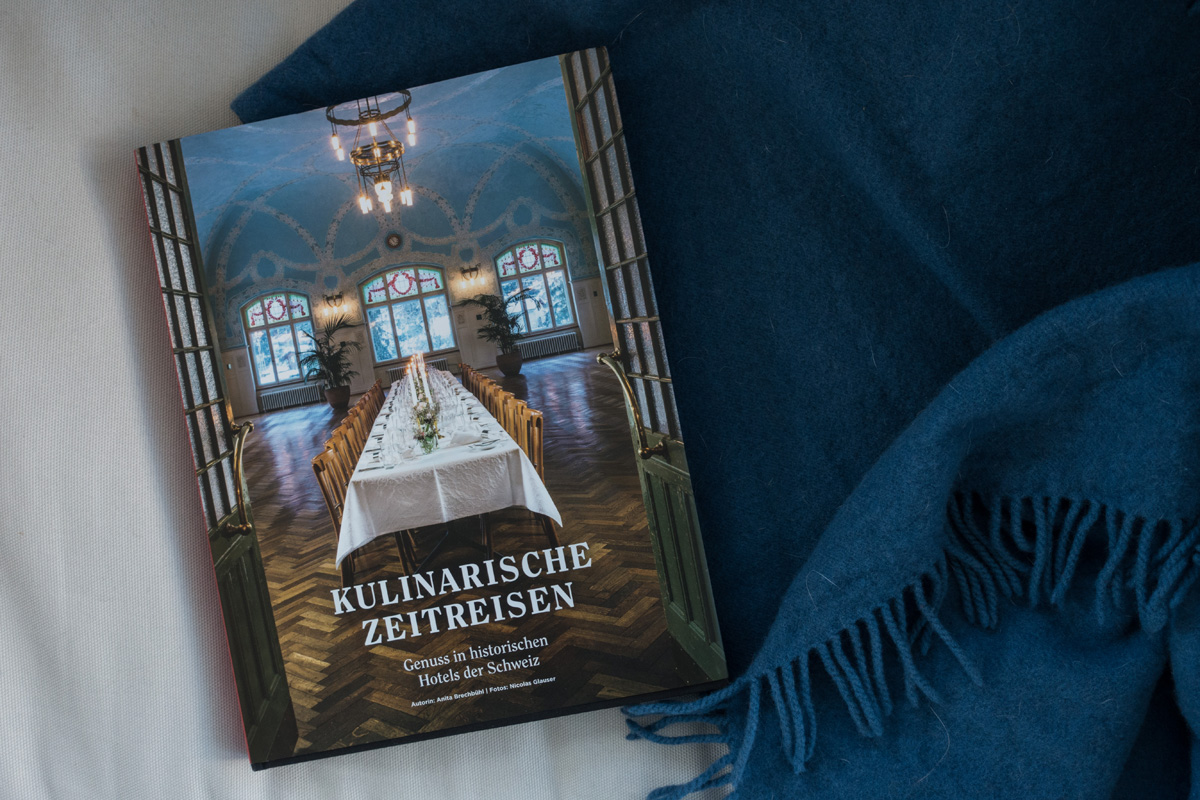Girona is known to have one of the best preserved Jewish ghettos in Europe and I was happy for a chance to explore it. When the chance arose to speak at a conference in this beautiful city, I jumped up and grabbed it. Not only did I learn a lot in the workshops I attended, I was able to meet new people who work in the same field I do and the catch up with others I had met the year before. Besides, it’s not every day you attend a conference at an old monastery and speak in a church. The coffee breaks and lunch were served on the first floor overlooking the cloister. A soft breeze blew in the warm air from the courtyard and we enjoyed our lunch hour while eating delicious tapas and drinking wine. Yes, there was wine for lunch. It made it all a bit decadent, and I mused how this was the first conference I had been to that served wine for lunch. And I’ve been to several.
The social event had us going on a tour of the old town and ending up at a rooftop terrace with live music and more tapas. Almost everyone of importance was in Girona at some time: the Romans, the Moors and then Charlemagne. This makes for a city with a very rich history, where you can walk the streets and, in between the chatter of tourists, almost hear the voices of times gone by. Barcelona is only an hour train ride away and there are plenty of day-trippers who come up. But once they leave, the city quiets down again and you can hear the clicking of your shoes on the cobblestones.
After the conference, I had two whole days to explore the city to my heart’s content. I retraced all of what I had seen on the tour, ventured down every street in the Jewish quarter at least once, some definitely more often, sat in parks, people watched, and walked the entire length of the old wall twice. I didn’t skip the cathedral, the basilica, or the Jewish Museum either. By the end of those two days, I think I had seen everything. I even knew where the best ice cream was and wrote a letter in the sun while people watching during siesta. There, two people with huge backpacks walked by me who where hiking along the Camino de Santiago. I wondered for a moment which route they were hiking since I too have thought about hiking a part of the trail.
And yet again I was confronted with The Game of Thrones. After Ireland, I had unknowingly landed in another place where filming had taken place. Fans will undoubtedly recognize certain buildings in my collection of photos.
Girona is best known for the old Jewish ghettos where the streets are narrow and seem to disappear into nothing. I never had the feeling I could get lost and several times I’d walk down, or up, a street I hadn’t been along yet and suddenly find myself somewhere I had already been.
But it isn’t only about the streets, it’s also about the details. Many old churches have been converted into museums and other church related buildings are now homes to government offices. An innocent sounding museum is likely to have interesting carvings on the doorway or there may be a door that catches your eye. Up on “the hill” where the Roman soldiers once kept watch, there is a lush garden where it’s nice to rest your feet.
One of my favorite little spots were the Arab baths. The Moors weren’t in Girona for very long, only 70 years. But their influence was left in these baths. The baths were actually built in the 12th century, long after they had left, but the architectural style of these Roman inspired baths is clearly visible. Just like in Cordoba at the mosque, the small “dressing room” took my breath away.
Another highlight is definitely the old city wall. From there you have impressive views of the city. I ventured up at noon when most other people are at lunch and again in the evening to take advantage of the softer light.
The Cathedral of Saint Mary of Girona is architecturally of importance as it has the widest Gothic nave in the world and the second widest in the world (after St. Peter in Rome). The interior is most spectacular around behind the altar and the arches in the cloister depict, among others, animals and fantasy figures.
The Basilica of Saint Felix is across the street and about as different as can be. It’s light and airy, but also has a few highlights of it’s own. Such as the ceiling in the chapel.
I was also able to sneak in a photo or two of the cloister at the Monastery of Saint Daniel before an old nun gave me a serious talking to in Spanish. Cloisters have a certain attraction that makes me had to resist them. I earned the tongue lashing, but in return I was given a beautiful photo.
******
Where to stay:
We stayed at an AirBnB the old town. Right near all the main sights, it’s still quiet at night. The little balcony is perfect for people watching and listening to the sounds of a classical guitar.
Where to eat:
Girona is home to the best restaurant in the world, but you have to reserve a table 13 months in advance and make sure you take a full wallet with you. But, there are other equally delicious restaurants to choose from and it’s hard to decide which ones to pick.
Boira: Delicious, modern Spanish food, specializing in regional and seasonal dishes. Sit outside on the Plaça de la Independència or overlooking the river.
El Cul del Món: Exceptional food with a middle eastern twist. It’s a 15 min walk outside of Girona in the woods near the Monastery of Saint Daniel.

